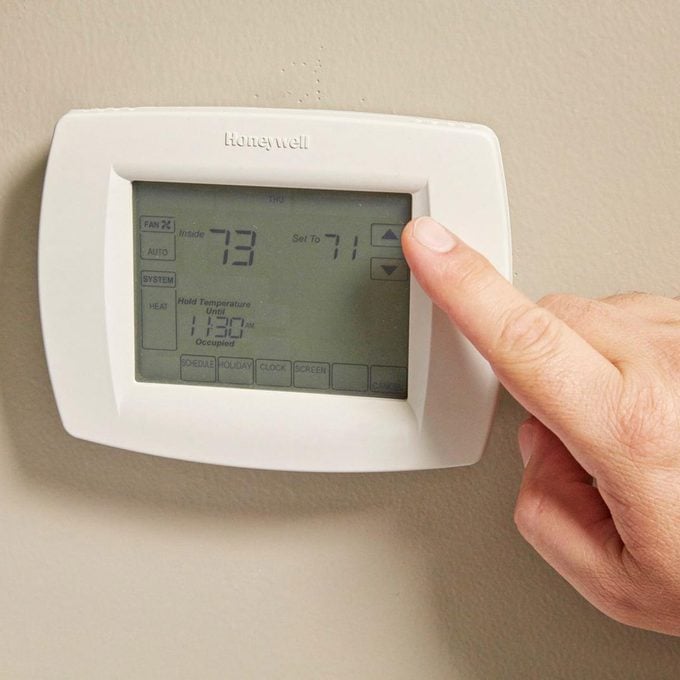Does Adjusting Your Thermostat Really Save You Money?
Updated: Sep. 18, 2023
If you're looking to cut down on your energy bills, thermostat set-backs are a great place to start. Here's why:

Does Setting Your Thermostat Save You Money?
It’s true: You can save money on your heating and cooling bills by simply resetting your thermostat at night and when you are away from home. According to the U.S. Department of Energy, “you can save as much as 10 percent per year on heating and cooling by simply turning your thermostat back seven to 10° for eight hours a day from its normal setting.” The savings is greater for buildings in milder climates than for those in more severe climates. Either way, knowing the optimal thermostat temperature for the winter is always good.
The same strategy works for summertime air conditioning temperatures as well. Simply keep your house warmer than normal when you’re away, and only cool your house when you’re at home. Basically, the smaller the difference between the indoor and outdoor temperatures, the lower your overall air conditioning bill will be.
To do this, you’ll need to install a programmable thermostat. Schedule the times you turn on the heating or air-conditioning. The thermostat can store multiple daily settings that you can manually override without affecting the rest of the schedule.
Important Factors that Affect Home Heating:
- How old is your house? The age of the house often determines the quality of your insulation. A well-insulated home holds heat longer and loses it slower, making the reheating or cooling period much quicker.
- Do you have hardwood or tile floors? If so, it will take longer to warm up the floor than it takes to warm up the air. But that’s easily remedied with a warm pair of slippers.
- What type of heating system do you have? Programmable thermostats are generally not recommended for heat pumps, where setting back the thermostat can cause the unit to operate inefficiently. In that case, maintaining a moderate temperature is the better savings strategy. Steam heating and radiant floor heating systems respond slowly to temperature changes, so some experts suggest set-backs aren’t best for these systems.
- Where is your thermostat located? Location can affect performance and efficiency. Consult the manufacturer’s installation instructions to prevent “ghost readings.” To operate properly, a thermostat must be on an interior wall away from direct sunlight, drafts, furniture, doorways, skylights, and windows.
Additionally, be cautious about how low you set your thermostat when you are trying to cool down your home quickly. This strategy will not actually help you save on home energy. Instead, it results in excessive cooling and, therefore, an unnecessary expense on your bill. The same goes for heating.